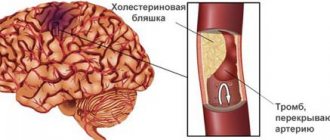Leukemia, which is often called blood cancer or leukemia, is a serious cancer. It affects the hematopoietic organs and causes changes due to which the number of leukocytes in the patient’s blood sharply increases. As the disease progresses, the blood gradually ceases to perform its functions in the body, which causes death if left untreated. The disease affects not only adults, but also children, and is found with equal frequency in men and women.
Types of disease
The modern classification of leukemia includes several principles of division into types. First of all, it is worth mentioning the division of cases of the disease according to the nature of the course into:
- acute, characterized by rapid development and the formation of a large number of immature blood cells - blasts;
- chronic, which are characterized by a long course and pathological production of mature leukocytes with altered properties.
Another principle for classifying leukemia is based on the level of differentiation of the affected cells, which can be:
- undifferentiated;
- quotational;
- blast.
In addition, oncologists distinguish many types of leukemia according to the types of cells whose pathological changes underlie the disease. According to this principle, lymphoblastic, monoblastic, myeloblastic, lymphocytic, myeloma and other types of disease are distinguished.
Celebrities who beat cancer
Actor Michael Douglas . Laryngeal cancer. The diagnosis was made in 2010. Two years later, the actor returned to cinema.
Singer Kylie Minogue . Breast cancer. Doctors discovered a tumor in 2005. After a course of treatment, the singer returned to the stage.
Actor Robert De Niro . Prostate cancer. The diagnosis was made in 2003. Treatment took about 2 months, then the actor returned to work.
Singer Rod Stewart . Thyroid cancer, prostate cancer. In 2000, the singer underwent surgery to remove a thyroid tumor, and three years ago he announced that he was diagnosed with prostate cancer. Meanwhile, in 2021, Rod released his new album.
Writer Daria Dontsova . Breast cancer. The tumor was discovered in 1998. Now she is actively helping women who are faced with this disease.
Singer Laima Vaikule . Breast cancer. The diagnosis was made in 1991. Now she continues to perform on stage.
Mission Possible. Russian stars who managed to defeat cancer Read more
Symptoms
The course of different types of disease is not accompanied by specific symptoms of leukemia. On the contrary, its manifestations are the same for all types of pathology and are poorly diagnosed in the initial stages. These include:
- increased susceptibility to colds and seasonal ailments;
- night sweats;
- joint and bone pain;
- swelling of the lymph nodes;
- instability of body temperature, constant sharp changes;
- pallor, grayish skin tone;
- general malaise, weakness;
- long-term healing of even minor injuries;
- causeless loss of body weight.
In the later stages of the disease, more distinct signs of leukemia appear:
- characteristic yellowness of the skin and eye whites;
- deterioration of vision, up to complete dysfunction;
- severe headaches;
- difficulty breathing, pneumonia;
- frequent nausea, vomiting;
- problems with cardiac activity;
- numbness of the facial muscles, partial or complete.
In later stages, due to increased fragility of blood vessels, subcutaneous and internal hemorrhages often develop. Ulcerative-necrotic tissue lesions and severe tonsillitis may appear.
No amateur performances!
Many of us try to independently determine whether we or our loved ones have cancer, based on various symptoms. Should not be doing that!
Since the name “cancer” is a kind of “basket” in which hundreds of different types of tumors and diseases “lie,” there is not a single exact sign of the disease.
Weight loss, pallor, nausea and fever, although they can accompany malignant tumors, can also be symptoms of many other diseases. And even pain is not a reliable sign of a tumor - pain can arise for a variety of reasons, and many types of cancer proceed secretly up to a certain point. Therefore, forget about trying to diagnose yourself without a doctor, because diagnosing cancer is difficult even for specialists.
Another thing to forget about is going to the oncologist and complaining about every symptom that worries you. This specialist deals with cancer only if the existence of a tumor has already been proven or there is strong suspicion in this regard. The oncologist most likely will not conduct a full examination and find out the cause of weight loss or nausea.
Therefore, it is wiser to consult a therapist or general practitioner. Ideally, these doctors should be involved in the initial diagnosis, and then, if necessary, prescribe additional examinations and involve specialist doctors.
Diagnosis via network
There are many applications and websites on the Internet where you can fill out a questionnaire and then assess your risk of cancer. But today there are no effective methods that can detect cancer without a doctor and additional examinations. Therefore, you should not trust such applications. Moreover, they can serve you badly: a “bad” result of an online test will make you needlessly nervous, and a “good” result can make you refuse to go to a specialist when it is really necessary.
How is blood type related to cancer? Scientists' opinions are divided Read more
Tumor markers – to pass or not?
Some of us try to take these tests ourselves to determine whether we have a malignant tumor. However, tumor marker studies are useless for detecting cancer. Increased levels of tumor markers may be associated with inflammation in various organs and other causes unrelated to cancer. On the other hand, many malignant tumors are not accompanied by an increase in tumor markers.
That is, these tests are only necessary to evaluate the effectiveness of treatment for certain types of cancer when the diagnosis has already been made.
The only tumor marker that can be used to detect cancer is prostate specific antigen (PSA), which is aimed at diagnosing prostate cancer in men. However, there is still no consensus in the medical community regarding the usefulness of this study. The fact is that an increase in PSA is not always associated with a malignant tumor; in addition, prostate cancer often develops so slowly that its treatment is not required - often older men with such a tumor die from natural causes, and not from cancer. Therefore, many experts believe that taking a PSA if the patient is not worried about anything is pointless.
Reference
The only available methods of self-diagnosis are regular examination of the mammary glands in women and examination of the skin to detect melanoma. When examining your breasts, you should be alerted to any changes in the skin of the breast, the presence of lumps in the breast, enlarged axillary lymph nodes, discharge from the nipple and changes in its shape. If you experience these symptoms, do not hesitate to see a doctor. As for melanoma, its sign can be any change in the mole - its increase in size, change in its shape, outline, ulceration on the surface of the mole. In all these cases, consult your doctor.
Causes and risk factors
A specific relationship between certain exposures and the occurrence of blood cancer has not yet been discovered, but risk factors that increase the likelihood of developing the disease are well known to oncologists.
- Heredity. If there are cases of the disease in the family, the risk increases 3-5 times. In addition, genetic diseases are a significant risk factor.
- Radiation. Significantly more often than usual, symptoms of leukemia occur in people exposed to radiation.
- Chemical substances. Dozens of chemical compounds that people come into contact with during their professional activities have pathogenic effects that provoke mutation of blood cells. In particular, these include gasoline vapors.
- Smoking. In people who smoke, the risk of acute myeloblastic leukemia increases several times.
The presence of one or even several of the listed factors does not mean that a person will necessarily get sick, but the likelihood of blood cancer is significantly increased.
What causes acute leukemia and can it be prevented?
A risk factor is something that increases the likelihood of disease. Some risk factors, such as smoking, can be eliminated. Other factors, such as age, cannot be changed.
Smoking is a proven risk factor for acute myeloid leukemia (AML). Although many people know that smoking causes lung cancer, few realize that smoking can affect cells not directly exposed to smoke.
Cancer-causing substances found in tobacco smoke enter the bloodstream and spread throughout the body. One fifth of AML cases are caused by smoking. People who smoke should try to quit smoking.
There are some environmental factors that have been linked to the development of acute leukemia. For example, long-term exposure to gasoline is a risk factor for AML, and exposure to high doses of radiation (atomic bomb explosion or nuclear reactor incident) increases the risk of AML and acute lymphoblastic leukemia (ALL).
People who have had other cancers and were treated with certain anticancer drugs are at increased risk of developing AML. Most of these cases of AML occur within 9 years of treatment for Hodgkin's disease (lymphogranulomatosis), non-Hodgkin's lymphoma (lymphosarcoma), ALL, or other malignancies such as breast and ovarian cancer.
There is some concern regarding high-voltage transmission lines as a risk factor for leukemia. According to some data, in these situations the risk of leukemia is not increased or increased slightly. What is clear is that most cases of leukemia are not associated with high-voltage transmission lines.
A small number of people with very rare diseases or the HTLV-1 virus have an increased risk of developing acute leukemia.
However, most people with leukemia have no identified risk factors. The cause of their illness remains unknown to this day. Due to the fact that the cause of leukemia is unclear, there are no methods of prevention, with the exception of two important points: avoid smoking and contact with substances that cause cancer, such as gasoline.
Stages
Acute and chronic blood cancer differ somewhat in the nature of the disease. Oncologists distinguish the following stages of acute leukemia:
- full clinical development, in which the patient experiences bleeding, inflammatory processes in various organs, the number of red blood cells decreases, and hemoglobin decreases;
- remission, when clinical manifestations decrease and the number of immature cells in the bone marrow does not exceed 5%;
- relapse, when the patient’s well-being worsens with an increase in the number of immature leukocytes in the bone marrow and blood;
- terminal, in which the tumor progresses, and almost all blood cells become pathological, which is why ulcerative-necrotic processes develop in many organs.
The stages of remission and relapse can be repeated cyclically several times, with relapses becoming more and more severe, and remissions becoming short and less pronounced.
Chronic leukemia is divided into the following stages:
- initial, lasting up to a year, during which the number of neutrophilic leukocytes in the blood increases and the alkaline phosphatase level drops several times;
- developed, lasting up to five years, with a clinical picture characteristic of the disease, when the bone marrow gradually ceases to produce normal blood cells, the spleen increases in size, and the altered cells gradually penetrate into the peripheral bloodstream;
- terminal, the duration of which does not exceed six months, characterized by the spread of cancer cells to all vital organs through the bloodstream.
Why does malignant pathology appear?
Scientists are still unclear about some of the causes of leukemia in children. However, there are some theoretical and practical justifications for answering the question of why children suffer from leukemia. The following causes of leukemia in children are distinguished:
- Genetic predisposition. Pathological genes are formed as a result of intrauterine chromosomal changes, which produce substances that prevent the maturation of healthy cells.
- Viral infection of the body. As a result of diseases of viral etiology suffered by a child, for example, chicken pox, mononucleosis, ARVI, etc., viruses are integrated into the cellular genome.
- Immunodeficiency. The immune system cannot cope with the destruction of foreign organisms and ceases to destroy its own pathological cells, including malignant ones.
- Radiation causes mutations in blood cells. Risk factors include maternal exposure to radiation (X-rays, tomography) during gestation, as well as living in a radioactive zone.
- Adverse habits of parents, especially mothers. Smoking, drinking alcohol and drug addiction.
- Secondary leukemia after radiation or chemotherapy for another cancer.
Leukemia also develops in children due to the formation of ozone holes as a result of active solar radiation. The causes of leukemia in children also lie in genetic pathologies, such as Down syndrome, Bloom syndrome, etc., as well as polycythemia.
Diagnostics
The main procedures in diagnosing leukemia are laboratory blood tests: general, biochemical, genetic.
Equally important are bone marrow and cerebrospinal fluid puncture studies:
- cytogenetic, identifying atypical chromosomes characteristic of altered cells;
- cytochemical, which makes it possible to detect the acute form of the disease at an early stage;
- immunophenotypic, as a result of which it becomes clear what types of cells have undergone malignant changes;
- myelogram, which allows you to determine the stage of the disease and the dynamics of the process.
At the same time, the patient is prescribed instrumental studies of internal organs - ultrasound, CT, MRI to determine leukemic infiltration.
LIST OF REFERENCES USED
1. Clinical guidelines of the Ministry of Health of the Russian Federation “Acute lymphoblastic leukemia”, 2021. 2. Bernbeck B., Wüller D., Janssen G., Wessalowski R., Göbel U., Schneider DT Symptoms of childhood acute lymphoblastic leukemia: red flags to recognize leukemia in daily practice. Klin Padiatr. Nov-Dec 2009;221(6):369–73. doi: 10.1055/s-0029-1239538. Epub 2009 Nov 4. PMID: 19890789 (https://pubmed.ncbi.nlm.nih.gov/19890789/). 3. Lyengar V., Shimanovsky A. Leukemia. StatPearls. Publishing LLC 2020. PMID: 32809325 (https://www.ncbi.nlm.nih.gov/books/NBK560490/). 4. Sokolova T.A., Kotlovsky Yu.V., Dubynina E.V., Ivanovskaya O.V., Veselova V.K., Kuznetsova E.Yu. Cytogenetic diagnostics for oncohematological diseases. Academy of Natural Sciences, 2012. ISBN: 978-5-91327-211-9. 5. Clinical guidelines of the Ministry of Health of the Russian Federation “Acute myeloid leukemia”, 2020. 6. Lee JW, Chung NG The treatment of pediatric chronic myelogenous leukemia in the imatinib era. Korean J Pediatr 2011 Mar;54(3):111–6. doi: 10.3345/kjp.2011.54.3.111. PMID: 21738540 (https://www.ncbi.nlm.nih.gov/pmc/articles/PMC3120996/). 7. Dvorak CC, Loh ML Juvenile Myelomonocytic Leukemia: Molecular Pathogenesis Informs Current Approaches to Therapy and Hematopoietic Cell Transplantation. Front Pediatr. 2014;2:25. doi: 10.3389/fped.2014.00025. PMID: 24734223 (https://www.ncbi.nlm.nih.gov/pmc/articles/PMC3975112/). 8. Davis AS, Viera AJ, Mead MD Leukemia: an overview for primary care. Am Fam Physician. 2014 May 1;89(9):731–8. PMID: 24784336 (https://pubmed.ncbi.nlm.nih.gov/24784336/). 9. National Cancer Institute, Advances in Leukemia Research, May 29, 2020 (https://www.cancer.gov/types/leukemia/research). 10. Whitehead TP, Metayer C, Wiemels JL, Singer AW, Miller MD Childhood Leukemia and Primary Prevention. Curr Probl Pediatr Adolesc Health Care. 2021 Oct;46(10):317–52. doi: 10.1016/j.cppeds.2016.08.004. PMID: 27968954 (https://www.ncbi.nlm.nih.gov/pmc/articles/PMC5161115/).
La Fondation La Roche-Posay and CCI (Childhood Cancer International) make every effort to ensure that the information provided is accurate and current at the time of publication. We are not responsible for information provided by third parties, incl. those that we refer to or highlight in this publication. The information in this publication should be used to supplement appropriate professional advice in your particular circumstances.
Treatment
After leukemia is detected, treatment is selected in accordance with the form and stage of the disease, the level of damage to vital organs, age, and general condition of the body. The treatment method is chosen by a specialist - an oncologist, an oncohematologist, and his goal is to restore the normal hematopoietic process, achieve long-term remission, and ideally, a complete cure.
The choice of method largely depends on the form of the pathology. In acute cases of the disease, chemotherapy has a good effect; in cases of chronic disease, the most effective method is often a bone marrow transplant or stem cell treatment. Adverse symptoms are relieved by detoxification and hemostatic therapy, the introduction of healthy platelets and leukocytes, and courses of antibiotics.
Rehabilitation
The list of clinical recommendations for acute leukemia during the rehabilitation period includes:
- measures to improve immunity;
- balanced diet;
- detoxification therapy;
- restoration of intestinal microflora;
- anti-stress psychotherapy;
- improving sleep quality.
During the recovery period, it is important to follow all the orders of the attending oncologist and complete the recommended treatment courses on time and in full.
Forecasts
The success of leukemia treatment depends on many factors, but in most cases the prognosis is favorable. Acute forms are more complex, since the rapid course of the disease leaves less time for the doctor to act. In the chronic form, favorable outcomes, according to statistics, account for up to 85% of cases.
In any case, there remains a chance for a long-term remission and complete relief from the disease. In adults, the probability of a positive outcome is at least 40%, in children - up to 90%.
How common is acute leukemia in adults?
In 2002, 8149 cases of leukemia were identified in Russia. Of these, acute leukemia accounted for 3257 cases, and subacute and chronic leukemia - 4872 cases.
It is estimated that 33,440 new cases of leukemia will be diagnosed in the United States in 2004. Approximately half of the cases will be acute leukemia. The most common type of acute leukemia in adults is acute myeloid leukemia (AML). At the same time, 11,920 new cases of AML are expected to be identified.
During 2004, 8,870 patients may die from acute leukemia in the United States.
The average age of patients with acute myeloid leukemia (AML) is 65 years. This is a disease of older people. The chance of developing leukemia for a 50-year-old person is 1 in 50,000, and for a 70-year-old it is 1 in 7,000. AML occurs more often in men compared to women.
Acute lymphoblastic leukemia (ALL) is more often diagnosed in children than in adults, and is most common before the age of 10 years. The probability of being diagnosed with ALL in a 50-year-old person is 1 in 125,000, and for a 70-year-old it is 1 in 60,000.
African Americans are 2 times less likely to develop ALL than the white population of America. Their risk of developing AML is also slightly lower than that of the white population.
With AML and ALL in adults, long-term remission or recovery can be achieved in 20-30% of cases. Depending on certain features of leukemia cells, the prognosis (outcome) of patients with AML and ALL may be better or worse.








